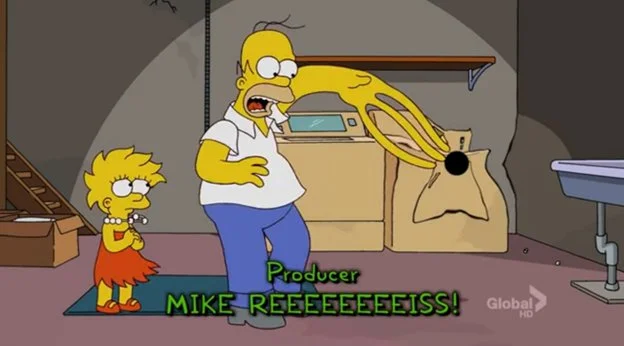1 May 2024
Astronomers are often rather creative with the names they come up with for the objects and processes they discover. An example is the verb to spaghettify and the noun spaghettification. The words describe what would happen to a person (or thing) who fell into a black hole. The gravity (tidal force) at the feet of the person would be orders of magnitude stronger than at the head, causing the person to be stretched like a piece of spaghetti.
The earliest use of the words, in this case the noun spaghettification, that I have found is in Nigel Calder’s 1977 book The Key to the Universe, which was published in association with a BBC television program of the same name. In the book, however, Calder implies that the term is already in use by astronomers studying black holes:
The fate of the imagined space-traveller who stumbled upon a black hole became a commonplace way of describing the extra-ordinary work of gravity, in and around a black hole. Before being trapped and crushed, the unwary astronaut would first be stretched into spaghetti.
The first hint of trouble might be his hair standing on end, his feet and hands feeling heavy, his head light. The astronaut’s blood would drain into his limbs, bringing merciful unconsciousness before gravity rendered his body into meat, into molecules, into atoms, and eventually into a long beam of particles hurtling toward the black hole.
Spaghettification was due to the gravity intensifying, metre by metre, in the approach to a black hole. It was a tidal effect, an extreme version of the process by which the Moon would pull more strongly on sea-water immediately beneath it than on the oceans to the far side of the Earth. In the more severe conditions around a black hole, the force of gravity increased so rapidly towards the centre that it could easily be a million times stronger at the spaceman’s feet than at his head. So he would be torn apart by the tide.
And the verb sees print by 1981, when it appears in Nigel Henbest’s The Mysterious Universe:
A simple nonspinning black hole would be no good for interuniverse travel. We have already seen the fate of the unfortunate explorer of such a hole, crushed inexorably by the one-way flow of space within, into the unseen central singularity. The entrance to the interuniverse tunnel must be rotating, or an electrically charged, black hole, large enough for the intrepid explorer not to be spaghettified.
Often scientific jargon (or is it slang in this case?) remains within the discourse of the scientists, but the public’s fascination with black holes and the rather gruesome imagery of the spaghettification process has caused the term to enter into mainstream discourse. Here is an example from, of all places, in a 2000 book review in the magazine Good Housekeeping:
It's a good bet that few guidebooks reveal where you can experience “spaghettifying.” But Around Chicago with Kids (Fodor’s, $10) does. (FYI: You can become long and skinny near a black hole in space…or in front of the wall of mirrors at the city’s Adler Planetarium.)
So that’s spaghettification, a rather grim and graphic description of an astronomical process.
There is, however, an older, non-astronomical use of the term. It appears in a 1965 English translation of Alfred Jarry’s 1897 play Ubu Cocu. Jarry’s (1873–1907) works were precursors to the twentieth-century genres of Dada, Surrealism and the Theater of the Absurd. The passage from Ubu Cocu refers to what will happen to man who cuckolds another:
There’s nothing to be done with him. We’ll have to make do with twisting the nose and nears [sic], with removal of the tongue and extraction of the teeth, laceration of the posterior, hacking to pieces of the spinal marrow and the partial or total spaghettification of the brain through the heels. He shall first be impaled, then beheaded, then finally drawn and quartered. After which the gentleman will be free, through our great clemency, to go and get himself hanged anywhere he chooses. No more harm will come to him, for I wish to treat him well.
The metaphor of spaghetti is original to the English translation. Jarry’s original French reads:
arrachement partiel ou total de la cervelle par les talons
(partial or total removal of the brain through the heels)
But this earlier appearance of spaghettification is probably unrelated to the astronomical usage. While it is possible that some astronomers had read Cyril Connolly’s translation of Jarry’s play or that Connolly was conversant with astronomers and astronomical jargon, both of these seem far less likely than the idea that the two uses are separate coinages.
Sources:
Calder, Nigel. The Key to the Universe. New York: Viking, 1977, 143. Archive.org.
“Have Tots Will Travel.” Good Housekeeping, March 2000, 69/2. ProQuest Magazine.
Henbest, Nigel. The Mysterious Universe. London: Ebury, 1981, 145. Archive.org.
Jarry, Alfred. Ubu Cocu, 5.2 (1897). In Selected Works of Alfred Jarry. Roger Shattuck and Simon Watson Taylor, eds. Cyril Connolly, trans. New York: Grove, 1965, 50. Archive.org.
———. Ubu Cocu (1897) in Tout Ubu. Maurice Saillet, ed. Paris: Librairie Générale Française, 1962, 244. Archive.org.
Image credit: Moore, Steven Dean (director) and Matt Groening (creator). “Treehouse of Horror XXIII” (TV episode). The Simpsons, 24.2, 7 October 2012. Fair use of a single frame from the animation to illustrate the topic under discussion.

